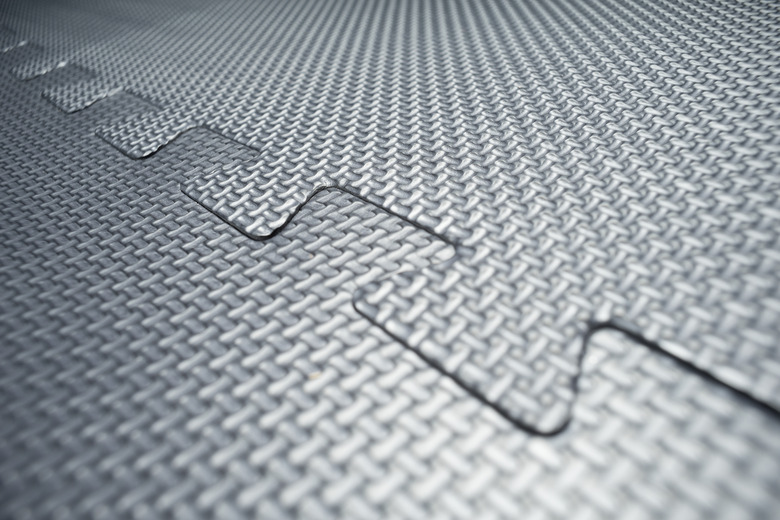How To Clean An Interlocking Foam Rubber Floor Mat
Parents need to be careful about germs in the home, especially when their kids are young enough to be playing on the floor. Germs are a hazard for babies and toddlers, and things that adults can leave on the floor without worry become a sickness hazard around small children who tend to put everything in their mouths. Interlocking foam rubber floor mats are popular for children's play areas in the home and public places but can present difficulties in terms of cleaning.
Cleaning Foam Play Mats
Cleaning Foam Play Mats
Foam play mats have several advantages. They're inexpensive, bright and colorful and are a wonderful way to pad a hard surface to create a soft, comfortable place for children to play. Children can roll around, nap and play with their toys on the mats and parents and caregivers can be confident that falling or rolling over can be done safely and without injury.
Cleaning interlocking foam play mats can be challenging because of the puzzle-piece-like angles that many of them have, but the cleaning process itself is fairly simple and straightforward. The most important thing to remember is to avoid any toxic cleansers that may have harsh chemicals, bleach or ammonia.
Resist the urge to sanitize the mats with alcohol. Instead, use a simple cleaning solution made of soap and distilled water. Dip a soft cloth into the cleaning solution and run it across the surface of the mat. Mats are porous and you want to avoid any water seeping into the holes, so be sure that the cloth is damp but not saturated. Repeat this process over the entire surface of the mat.
Natural Cleaner for Gym Mats
Natural Cleaner for Gym Mats
Gym mats are similarly durable and probably see even more germ exposure than foam play mats. Sweat, dirt, debris, chalk dust and other particles collect on gym mats, particularly when used by more than one person. It may be tempting to use a heavy-duty antibacterial sanitizing cleaner as a cleaning solution for gymnastic mats, but resist the urge.
Many sanitizing cleaners are made with harsh chemical agents that are toxic and can prove a health risk when coming into contact with skin. Instead, opt for a natural cleaner for gym mats. Wipe the mats with a dry cloth after they've been used for exercising, and use a cleanser with natural antibacterial properties or a mixture of white vinegar and water to clean them. Run a cloth that's gently moistened with the solution across the surface of the mat.
Disposable natural antibacterial wipes are also a great choice for cleaning the mats after exercising, especially if you use a yoga mat that's often rolled tightly soon after use. This can cause moisture and bacteria to become trapped and multiply. If you have large, thick gym mats laid next to each other, don't forget to go over the mats with a vacuum cleaner. Use the tube attachment to get in between any crevices.
Homemade Cleaning Solution for Mats
Homemade Cleaning Solution for Mats
Homemade cleaning solutions work equally well on gym mats, foam mats and rubber floors. The best mop for rubber floors is one that you can wring out before placing onto the floor. Rubber can rot if left with standing water, so it's best to make sure that you can quickly and easily wipe the surface of the mat without saturating it.
In a large bucket, combine white vinegar, warm water and a few drops of essential oils (optional for fragrance). Mix the solution and dip a sponge mop into it. Thoroughly wring the mop out until it's just damp but not dripping, and run it over the surface of a just-vacuumed mat or rubber floor.
Make sure you cover the entire surface of the mat or floor with cleaning solution, taking care not to saturate it. Allow the mat or floor to dry in a well-ventilated area. With a soft dry cloth, dry out the cracks between the mats where any additional moisture may have collected.
